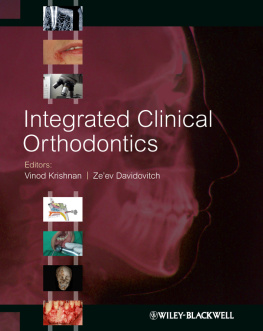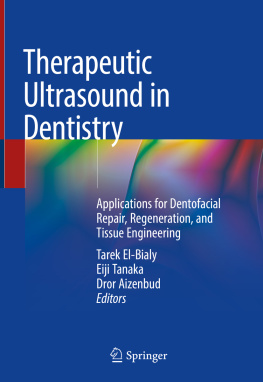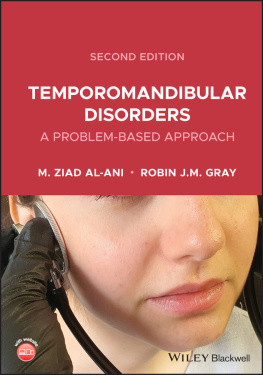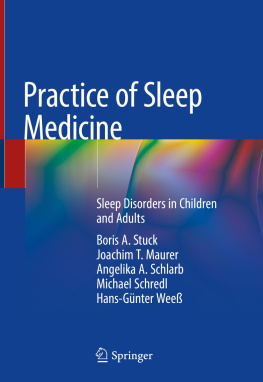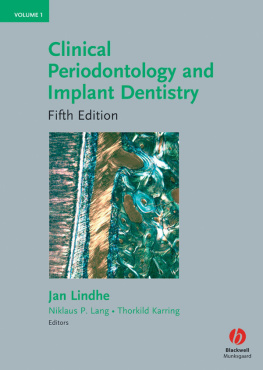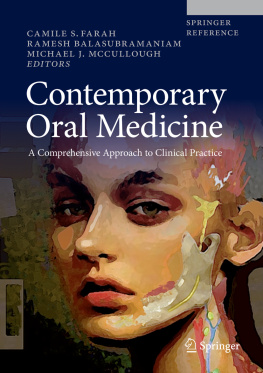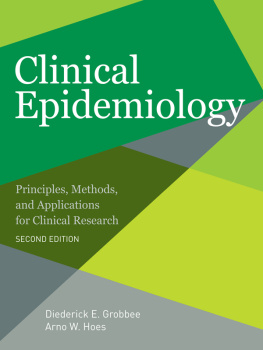This edition first published 2012
2012 by Blackwell Publishing Ltd
Blackwell Publishing was acquired by John Wiley & Sons in February 2007. Blackwells publishing program has been merged with Wileys global Scientific, Technical and Medical business to form Wiley-Blackwell.
Registered office: John Wiley & Sons, Ltd, The Atrium, Southern Gate, Chichester, West Sussex, PO19 8SQ, UK
Editorial offices: 9600 Garsington Road, Oxford, OX4 2DQ, UK
The Atrium, Southern Gate, Chichester, West Sussex, PO19 8SQ, UK
2121 State Avenue, Ames, Iowa 50014-8300, USA
For details of our global editorial offices, for customer services and for information about how to apply for permission to reuse the copyright material in this book please see our website at www.wiley.com/wiley-blackwell.
The right of the author to be identified as the author of this work has been asserted in accordance with the UK Copyright, Designs and Patents Act 1988.
All rights reserved. No part of this publication may be reproduced, stored in a retrieval system, or transmitted, in any form or by any means, electronic, mechanical, photocopying, recording or otherwise, except as permitted by the UK Copyright, Designs and Patents Act 1988, without the prior permission of the publisher.
Designations used by companies to distinguish their products are often claimed as trademarks. All brand names and product names used in this book are trade names, service marks, trademarks or registered trademarks of their respective owners. The publisher is not associated with any product or vendor mentioned in this book. This publication is designed to provide accurate and authoritative information in regard to the subject matter covered. It is sold on the understanding that the publisher is not engaged in rendering professional services. If professional advice or other expert assistance is required, the services of a competent professional should be sought.
Library of Congress Cataloging-in-Publication Data
Integrated clinical orthodontics / edited by Vinod Krishnan, Zeev Davidovitch.
p. ; cm.
Includes bibliographical references and index.
ISBN 978-1-4443-3597-2 (hardback)
I. Krishnan, Vinod. II. Davidovitch, Zeev.
[DNLM: 1. Orthodonticsmethods. WU 400]
LC classification not assigned
617.6'43dc23
2011034246
A catalogue record for this book is available from the British Library.
Wiley also publishes its books in a variety of electronic formats. Some content that appears in print may not be available in electronic books.
ISBN 978-1-4443-9860-1 (epdf)
ISBN 978-1-4443-9861-8 (epub)
ISBN 978-1-4443-9862-5 (mobi)
My ever-inspiring family, who supported me throughout this project
My children, Jithu and Malu
My mentors, Dr Jyothindra Kumar (orthodontist) and the late Dr Ponnuswamy (anatomist), who changed the way I looked at my profession
and
All those who would love to see advancement in the Science of Orthodontics
Vinod Krishnan
My wife, for her continuous support and advice; my children, for their compassion and constructive suggestions; and my grandchildren, for their excellence in computer science
Zeev Davidovitch
Dedication
Laure Lebret and Anna-Marie Grn: for lives committed to integrated orthodontic education
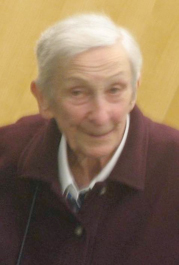
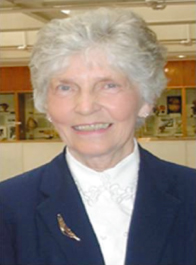
It is fitting to dedicate a book titled Integrated Clinical Orthodontics to two teachers whose lives were committed to interactive and integrated education: Laure Lebret and Anna-Marie Grn. Both were full-time faculty members in the Departments of Orthodontics at the Forsyth Dental Center (initially The Forsyth Infirmary for Children and now The Forsyth Institute) and the Harvard School of Dental Medicine. The two affiliated institutions co-sponsored the orthodontic postgraduate program in an unparalleled combination until 1990. Together with Dr Coenrad F A Moorrees, the Chairman of both departments for over 40 years, they were the pillars of a unique educational program. The fact that the three of them originated from three different countries stands as an important detail in the history of a program whose graduates have spread worldwide, carrying with them the notion that professional excellence requires constant curiosity, and a search for contributing factors derived from any reasonable source. Coenrad Moorrees was born in Holland, Laure Lebret in France, and Anna-Marie Grn in Denmark. Each was touched with difficult experiences during the Second World War.
To many generations of Harvard/Forsyth orthodontic graduates, our education was nurtured with the indelible impact of these three teachers, who were role models of civility, collegiality, scientific thinking, and productivity. Dr Moorrees departed in 2003, Dr Lebret in 2009, and one year later, Dr Grn joined them, leaving behind a legacy of goodness, along with the hard and patient work of educating hundreds of orthodontists, many of whom became academicians, among them an unconventional number of chairpersons or program directors.
Laure Lebret and Anna-Marie Grn were pioneer women, as dentists, orthodontists, and postgraduate teachers. Known as the important cornerstones in Coenrad Moorrees team, both had solid and independent cores with sharp minds and caring dispositions. They were involved with Dr Moorrees in seminal studies on the dentition and various aspects of facial growth, the most important of which was a long-term study of over 400 sets of twins, investigating the relation of facial and dental development.
In addition to co-authoring papers with Dr Moorrees and other workers on dental development, natural head position, and the mesh diagram analysis, Laure Lebret worked and published on the growth of the human palate, the reproducibility of rating stages of tooth movement, and physiological tooth migration. While tackling with Dr Moorrees the principles of diagnosis and also dental development, Anna-Marie Grns role was cut in the equally demanding and meticulous research of reproducibility of rating stages of osseous development, and the prediction of the timing of tooth emergence. The research that both women engaged in was not easy, for they mastered the intricacies of, and fully understood the variations in, clinical research, let alone longitudinal investigations with thousands of collected measurements per child. Their inquiry was clean, responsible, and painfully detailed. Their publications are, currently some 40 and 50 years later, having an impact on clinical decisions for thousands of children worldwide. One particular summary of much of the combined efforts of Lebret, Grn, and Moorrees is embedded in a paper entitled Growth studies of the dentition: a review (Moorrees CF, Grn AM, Lebret LM, Yen PK, Frhlich FJ, American Journal of Orthodontics 1969; 55: 60016). Rarely is it not referenced in a paper or chapter on dental development.
Beyond the research and organized, clear didactics, the clinical teaching of Grn and Lebret was in line with what today is labeled evidence-based practice and critical appraisal. Justify the plan, was their modus operandi, and consider the alternatives, before you decide. They were not necessarily unique in these requests. They simply transferred their research experience into daily clinical practice. They translated the central tendencies developed by research into the individual environment, to choose and deliver sound individualized treatment. That was the educational culture they helped us go through, and later propagate on our own as we became educators.

